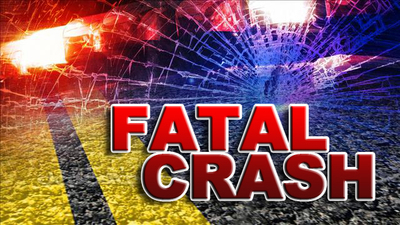Greatest Cause Of Traffic Fatalities? We Are.
By Martha Hindes
The Auto Channel
A half century ago there wasn't much public emphasis on driving safety. No auto company ran safety ads. It just wasn't done. "That's because people didn't want to be reminded that cars can kill," said one long-time industry executive.
That was before the federal safety act of 50 years ago. And that head-in-the-sand perception of vehicle safety is long gone now as a 180-degree flip in awareness dominates every facet of the auto industry.
But being aware is still far from the desired goal, according to Dr. Mark R. Rosekind, Administrator of the National Highway and Traffic Administration (NHTSA). While the federal safety agency -- part of the Department of Transportation (DOT) -- is quick to remind everyone of the 35,200 traffic fatalities in the U.S. last year, it is really interested in only one number. That is zero.
The agency also notes some other disturbing data that have emerged while calculating that staggering 2015 toll. The greatest offender in that 35+K death tally is you and me. Human beings account for 94 percent of all vehicle fatalities, he said. And that not only includes single or multiple vehicle crashes, but the traffic deaths of motorcyclists, pedestrians and bicycle riders.
If it weren't for human beings, driving safety likely would be a non-issue, according to Dr. Rosekind. He was one of the speakers at the annual CAR Management Briefing Seminars held this week, that draws hundreds of auto industry executives and professionals to the annual sessions at Traverse City, Michigan.
"The only appropriate target is zero (deaths)," he said. "That's the only acceptable goal for us."
Dr. Rosekind's participation was at the precipice of drastic changes in the auto industry highlighted at this year's conference. Whether consumers are ready for it or not, developments in vehicle automation including self-driving cars and vehicle-to-vehicle (V2V) communication is closer than many people think, with consumer acceptance the great unknown. Part of that evolutionary development is the identification of 120 countermeasures to address the problem that can include such earlier technical advances as seat belts and air bags, but are expanding into automatic braking and other aspects of self driving vehicles.
Vehicle makers have enhanced safety awareness and have won NHTSA's four- and five-star safety ratings by adding safety features designed to help prevent an accident or mitigate the effects when one occurs. Those apply to nearly every vehicle that's manufactured today, Dr. Rosekind said. "Ninety-six percent will get a four or five-star rating."
One emphasis now is to learn from the aerospace industry with a stellar safety record for years. Airplane makers resolved safety issues by sharing safety data and developing solutions outside of a competitive framework so everyone benefitted. "The aerospace industry has been at zero for major commercial fatalities for a long time," he said, noting that no pilot goes into a cockpit and looks for a five-star rating on the wall. The auto industry needs to collaborate in a similar fashion, with most auto makers already signing on for a NHTSA workshop to learn how to similarly share and learn best practices.
Vehicle braking is a major reason for a significant number of crashes. Federally mandating standardized features such as automated braking technology by 2022 could help motorized vehicles achieve similar results. (Toyota said it could accomplish that by 2017.) Braking is responsible tor a substantial number of crashes. But it's only one of the self-driving technologies that could bypass the human factor
Dr. Rosekind encouraged consumers to contact their congressional representatives to pay for a $3.9 billion proposal from the Obama administration to develop a 10-year plan for the industry to encourage self-driving technology. The proposal was first announced by DOT secretary Anthony Foxx in January, 2016 at Detroit, Michigan's North American International Auto Show.
And self-driving technology, not vulnerable to such problems as distractions, drunk driving, texting or falling asleep at the wheel could dramatically improve the chances of reaching zero.
Dr. Rosekind summed up the problem in one terse sentence: "Changing the human is very hard."



